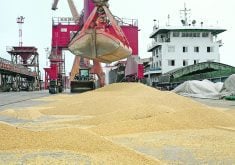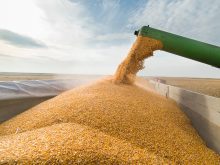Farmers in Canada and the United States may fear the market impact of genetically modified wheat.
But over the long term, says North Dakota State University economist Bill Wilson, delays in scientific advancements of wheat have made the crop a poor cousin to corn and soybeans.
“It’s important for all of us here to realize that irrespective of what happens with … small grains, it’s charging forward very rapidly in row crops and oilseeds and other big crops,” said Wilson at the Northern Plains Producer Conference.
Read Also

Bunge’s crop mix is changing
Bunge has predominantly been a soybean processing firm, but that’s about to change after the merger with Viterra with softseed processing and grain merchandising gaining ground.
“As that occurs, it results in acres being taken away from traditional small grains regions.”
Wilson said corn and soybeans have benefitted from far more research and development in the past 30 years because they cover more acres than wheat. That has sparked more rapid growth in productivity and returns from those crops.
Wilson said per acre corn yields in the United States have increased by 219 percent in the past 30 years. Soybean per-acre yields have increased103 percent and wheat 49 percent.
In North Dakota in the same period, gross returns for an acre of corn increased by 449 percent, soybeans by 300 percent and wheat by 148 percent.
Wilson said that has cut into U.S. wheat acreage.
North Dakota producers have been ramping up acres of soybeans, sunflowers and canola, while for the first time, more corn acres were planted in Kansas this year than wheat.
Wilson said this should give a jolt to millers and other wheat users.
“Industry leaders should be concerned about where are the acres of wheat going,” he said.
“As the profitability of other crops grow relative to wheat, perhaps because of these technologies, wheat and other small grains – durum and barley – will suffer.”















